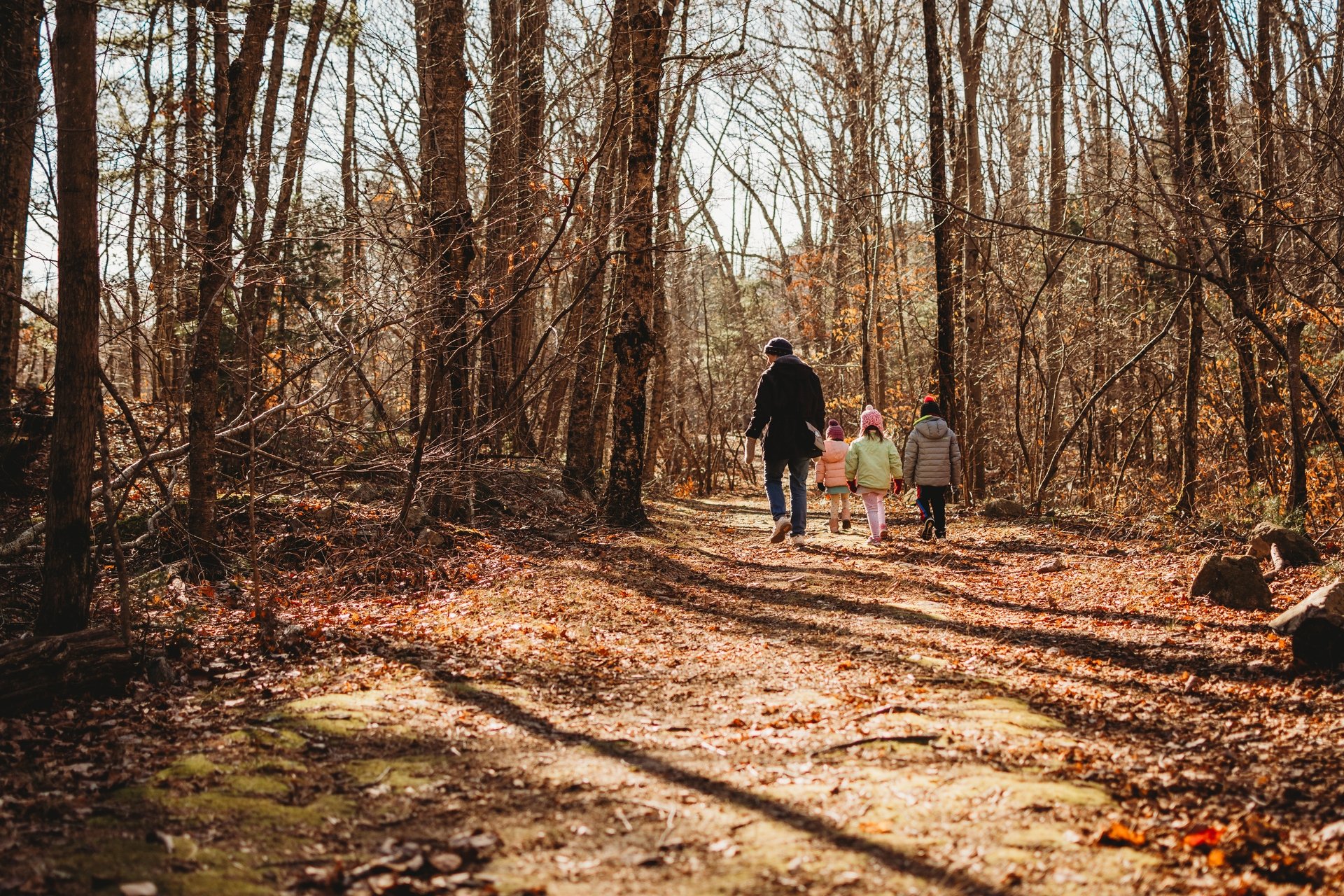Contrary to Noah Kahan’s album Stick Season, we love Massachusetts because it’s the season of the sticks!
What is Stick Season?
The term “stick season” refers to the brief, uniquely New England season that’s found after the leaves have fallen in autumn and before the snow comes in winter. A phrase made popular by Vermonters, stick season marks a time of transition, when the days are shorter, colder, and devoid of much of the greenery we’ve been seeing for the past 9 months.
Despite the lack of color, stick season provides ideal conditions to study an often-overlooked element of the natural world: plant buds. What may look like tiny bulbus ends in a bramble of overlapping lines and angles, can become a purposeful patchwork of ecological stories with a little insight.
Taking a Closer Look at Sticks
Next time you’re out on the trail, stop and take a closer look at the branches around you. Notice how the tips and edges are marked by buds, unique to the species they’re growing from. When identifying buds, look closely at a few different elements.
Are the buds directly opposite each other like maples, ash, and dogwoods or do they alternate along the branch like all other trees including oaks and birches?
How is it shaped – long and skinny like a beech or short and squat like an ash?
How many buds are at the end of the branch? Most trees have a single terminal bud, but maples have 3 and oaks have 4-5.
What color are the scales covering the buds? Most buds are brownish but red and sliver maples have bright red buds and willows have fuzzy gray buds.
Magnifying lenses and field guides can be incredibly helpful when taking an inquisitive eye to sticks and buds, so don’t forget to bring them with you too.
Where to Explore During Stick Season
You’d be hard pressed to find a Mass Audubon wildlife sanctuary that doesn’t have shrubs and trees for branch and bud study. Here are some of our favorite spots.
- Broad Meadow Brook in Worcester: Look for Shagbark Hickory buds, egg-shaped with scales and matted hairs, on the Enchanted Forest Trail.
- Moose Hill in Sharon: Head toward the Billings Barn to find the 265-year-old maple trees nicknamed “George and Martha” due to their presence during the Revolutionary War.
- Boston Nature Center in Mattapan: Traverse the Snail Trail to take a closer look at birch tree sticks.
- Old Baldy in Otis: Walk the short (but steep) trail to the summit for a spectacular 360° vista of the surrounding sugar maple, white ash, and basswood forests.
- Ipswich River in Topsfield: You’re bound to find a unique selection of buds lining the 12 miles of trails, which wander through forests, meadows, and wetlands.
- Ashumet Holly in Falmouth: Investigate 1,000 holly trees of 65 varieties – challenge yourself to identify them by their sticks and buds!
- Felix Neck in Edgartown: Explore 4 miles of trails, passing through woodlands, meadows, and ponds, with unique coastal growth.
- North Hill Marsh in Duxbury: Located within Duxbury’s Eastern Greenbelt, is complete with oak and pine woodlands, wetlands, and 90-acre pond.
- Broadmoor in Natick: Enjoy the red maple, blueberry, and larch swamp. Birds often feed on seeds and berries in low sheltered spots along the Blueberry Swamp Trail and there’s no shortage of plants, branches, and buds.
Stay Connected
Don't miss a beat on all the ways you can get outdoors, celebrate nature, and get involved.



